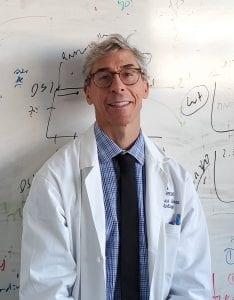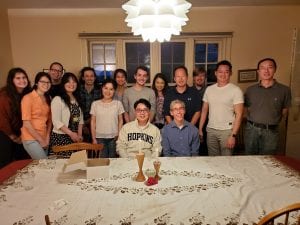Ira Pastor, ideaXme exponential health ambassador and founder of Bioquark, interviews Dr. Luis Garza, MD-PhD, Associate Professor, Department of Dermatology, Johns Hopkins School of Medicine.

Ira Pastor comments:
On the last several shows we have spent time on different hierarchical levels of the biologic architecture of the life, disease and aging processes. We’ve spent some time talking about the genome, the microbiome, extracellular matrices, and systems biology.
We’ve also begun to do a deeper dive into how applications of these and other technologies will have a beneficial therapeutic effect on various critical organ systems that keep us vital and functional throughout a lifetime. We’ve had guests on to talk about the brain, the heart, and the gut to date.
Today, we are going to take a step into an organ system that we have not touched on yet, and that is the area of the skin, our largest organ.
While many may look at the skin as just another layer of tissue, it must be remembered that in addition to being the body’s largest organ, it represents a complex bio-membrane containing tens of billions of cells, miles of blood vessels and nerves, as well as billions of pores and corpuscles. It is integrally connected to, and is constantly interacting and communicating back and forth between a lot that goes on “below” amongst the rest of your body’s 30 trillion other cells, in either protecting us from external threats and endogenous stimuli (UV rays, pollution, microbes, etc.), as well as all that “percolates upwards” (including inflammatory factors, oxidation byproducts, xeno-metabolites, epi-genetic modifying factors, etc,) which also affect skin biology, aging, appearance, and health.
Dr. Luis Garza
To go further into some very exciting work in the area of regenerative medicine, we are joined today by Dr. Luis Garza, MD-PhD, Associate Professor, Department of Dermatology, Johns Hopkins School of Medicine.

Dr. Garza received his undergraduate degree in neurobiology from Cornell University and his M.D. and Ph.D. together from the medical scientist training program at the University of Pennsylvania School of Medicine.
Dr. Garza completed his residency in dermatology at the University of Michigan and performed his fellowship in dermatology at the University of Pennsylvania, where he was involved in discovering the intricate connections between prostaglandin synthesis and male pattern baldness.
He joined the Johns Hopkins faculty in 2009.
Dr. Garza’s areas of clinical expertise include wound care and general dermatology. In addition to treating patients, Dr. Garza runs a molecular biology laboratory that studies skin stem cells and wound healing with an emphasis on identifying the next generation of wound healing therapeutics and diagnostics.
Skin Identity
The current focus of his lab is what controls and maintains skin identity. His lab is also looking at how, during wounding, skin identity is typically lost (i.e. via scaring), but in rare situations, complete regeneration occurs.
Understanding these questions will have broad significance to regeneration and stem cell biology in multiple organs, and understanding wound healing programs that re-initiate embryonic developmental patterns might eventually lead to insights on how to trigger the re-growth of more complex tissue, such as a severed human limb, for example.
Dr. Garza is an associate editor for the Journal of Investigative Dermatology. He is a member of the American Academy of Dermatology, the Society for Investigative Dermatology and the North American Clinical Dermatology Society.
Today we will hear from Dr. Garza:
How he became interested in health and dermatology, and how he segued into the area of wound healing and regenerative biology. We’ll learn about the intricate biological balancing act between wound healing and regeneration in humans. Dr. Garza will discuss his work in stem cell positional identity. We’ll hear about his recent discovery of how self-noncoding double-stranded RNA (dsRNA) may be involved as a very important set of factors in accomplishing “scarless” healing and regeneration of hair follicles after a deep wound. Finally, we’ll hear about his future clinical plans.

Credits: Ira Pastor interview video, text, and audio.
Follow Ira Pastor on Twitter: @IraSamuelPastor
If you liked this interview, be sure to check out our interview with Dr. Denise Montell on human cell biology!
Follow ideaXme on Twitter: @ideaxm
On Instagram: @ideaxme
On YouTube: ideaxme
Find ideaXme across the internet including on iTunes, SoundCloud, Radio Public, TuneIn Radio, I Heart Radio, Google Podcasts, Spotify and more.
ideaXme is a global podcast, ambassador and mentor programme. Our mission: Move the human story forward!™ ideaXme Ltd.
